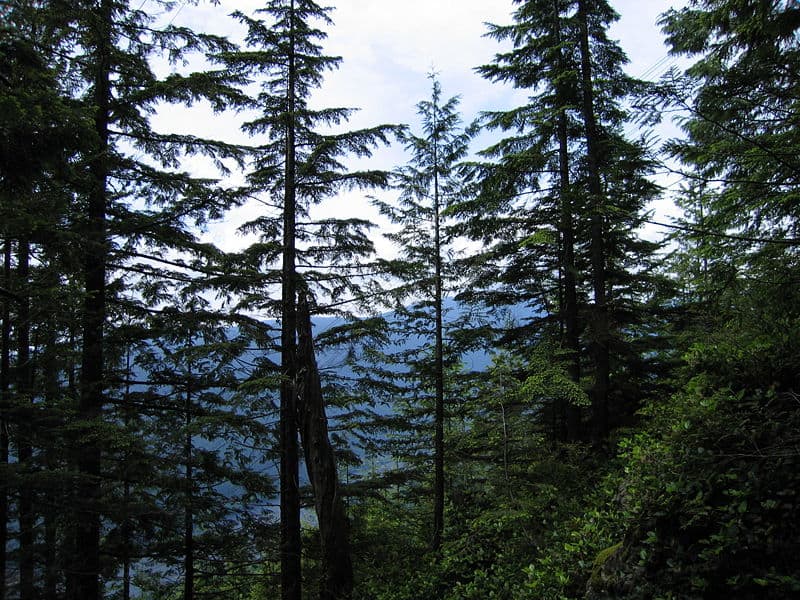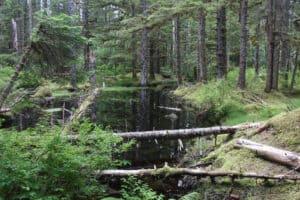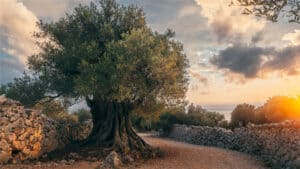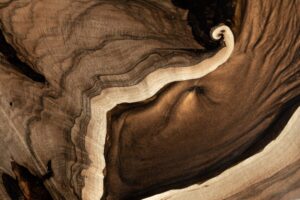The West Coast is known for its majestic trees, towering over the peaceful forests like gentle giants from the past. Walking amidst these trees is an incredible experience that everyone should enjoy.
Despite their shared, overwhelming presence, these giant trees have unique features that set them apart from each other. While the sequoia and red cedar trees are similar at a glance, they have different classifications, uses, and features.
Before digging in, let’s clear up some confusion: people often mix up the giant sequoia vs. coast redwood. Despite the name, the coast redwood (Sequoia sempervirens) is the only true living member of the Sequoia genus and is the tree most frequently confused with a red cedar tree. For this comparison, we’ll be comparing the true sequoia (coast redwood) with the Western red cedar.
Let’s dig in!
Comparing Sequoia vs. Red Cedar Tree
| Sequoia | Red Cedar Tree | |
|---|---|---|
| Classification | Kingdom: Plantae Clade: Tracheophytes Clade: Gymnosperms Division: Pinophyta Class: Pinopsida Order: Pinales Family: Cupressaceae Genus: Sequoia Species: Sequoia sempervirens | Kingdom: Plantae Clade: Tracheophytes Clade: Gymnosperms Division: Pinophyta Class: Pinopsida Order: Cupressales Family: Cupressaceae Genus: Thuja Species:Thuja plicata |
| Origin | Oregon, California, British Columbia | Oregon, California, British Columbia, Montana, Idaho |
| Natural Habitat | Coastal forests | Coastal forests, Mountainous forests |
| USDA Hardiness Zone | Zones 7-10 | Zones 5-8 |
| Conservation Status in the US | Endangered, protected | Historically used for building cultural significance |
| Size | Height: 200 to 325 feet (60 to 99 m) | Height: 150 to 230 feet (45 to 70 m) |
| Shape | Even, slender trunk; conical crown | Slightly tapered trunk; ovaline crown |
| Foliage | Needle and awl-shaped | Flat, scale-like sprays |
| Wood | Pest-resistant, burn-resistant softwood | Disease-resistant softwood |
| Cones | 0.8 – 1 inch (2 to 2.5 cm) | 0.4 -0.6 inch (1 to 1.5 cm) |
| Uses | Historically used for building due to fire-resistance | Historically used for building; cultural significance |
| Elevation Limit (Distance Above Sea Level) | Upper elevation limit: 3,018 feet (920 m)Lower elevation limit: 3 feet (1 m) | Upper elevation limit: 7,510 feet (2,290 m)Lower elevation limit: Sea level to 3,600 feet (1,100 m) |
The Key Differences Between Sequoia vs. Red Cedar Tree
While the sequoia and red cedar trees both grow in the Pacific Northwest and share similarities, they’re quite different from one another.
The sequoia (coast redwood) is larger, more burn resistant, and tends to be more rare in the Northern region and at higher elevations.
The Western red cedar tree is shorter (though still an astounding 150 feet tall at minimum), has a more tapered trunk, and a more ovaline crown that varies depending on the light exposure.
Let’s take a closer look at the overarching differences between these majestic trees.
Sequoia vs. Red Cedar Tree: Classification
While the sequoia and red cedar tree are both members of the family Cupressaceae, that’s where the relationship ends.
Sequoia is the only surviving member of the Sequoia genus and the species sempervirens — a Latin term roughly translating to “evergreen.” The giant sequoia is in the genus Sequoiadendron but shares the subfamily Sequoioideae with the coast redwood. This contributes to the confusion, as the term “sequoia” is often used interchangeably.
The red cedar tree is in the genus Thuja, which is a part of the cypress family. It is not a true cedar and is often confused with Juniperus virginiana, also known as the Eastern red cedar tree. It’s not a true cedar, either.
Sequoia vs. Red Cedar Tree: Distribution
Both the sequoia and red cedar trees are found in the Pacific Northwest, primarily in California and Oregon. They both extend North into British Columbia, Canada.
However, the sequoia has a smaller range than the red cedar tree. The red cedar tree extends further into British Columbia and fans East into parts of Idaho and Montana. You can even find this beauty in Glacier National Park.
Sequoia vs. Red Cedar Tree: Hardiness Zone
The sequoia performs better in warmer climates, thriving in USDA Zones 7-10. Meanwhile, the red cedar tree is more cold-hardy, thriving in USDA Zones Zones 5-8.
This overlap is highlighted by their distribution, with the sequoia becoming rarer as you travel North and the red cedar tree petering out as you travel South.
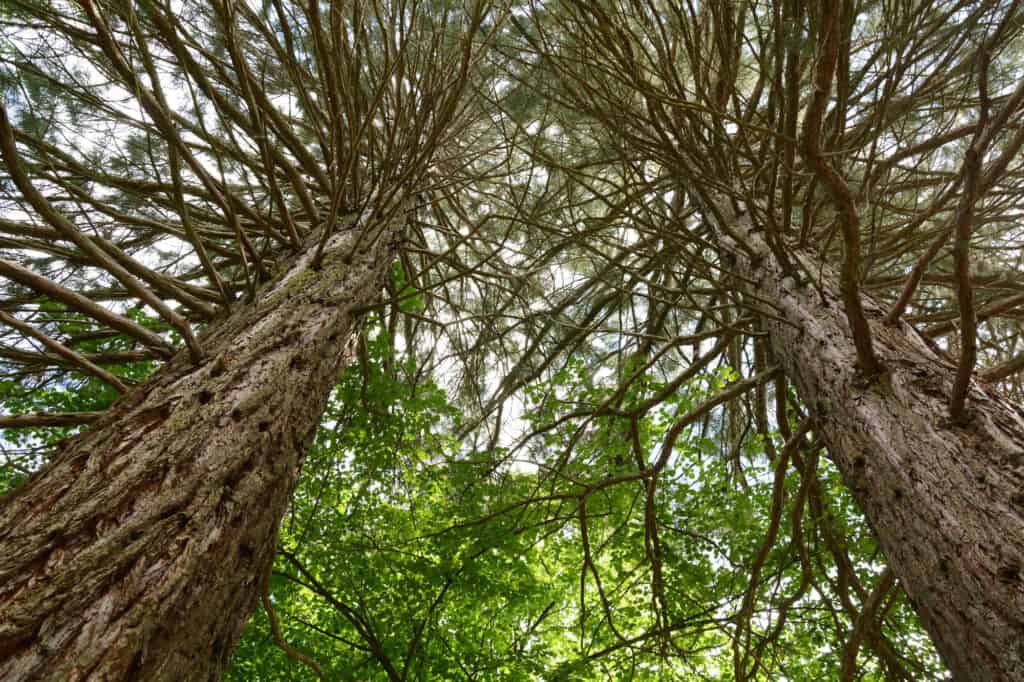
, also known as the coast redwood, is the only surviving member of the
Sequoiagenus.
©Greens and Blues/Shutterstock.com
Sequoia vs. Red Cedar Tree: Size and Shape
While it’s difficult to tell the difference from the ground, the sequoia ranges from 200 feet to a breathtaking 325 feet. Its crown is more conical, as you’d expect from an evergreen tree.
The red cedar tree ranges from 150 to 230 feet tall, with a more ovaline crown that’s reminiscent of a deciduous tree. The crown tends to distribute lower on the tree in spacious, well-lit areas and crowds near the top of the tree in denser forests.
Sequoia vs. Red Cedar Tree: Uses
The sequoia is endangered and protected. Its wood is some of the most expensive in the world due to its protected status, costing $1,597 per cubic meter—and that’s not to mention the ethics and legalities.
Traditionally, the sequoia was used for building among Indigenous tribes and early settlers due to its perceived fire resistance. Its soft wood is slow to kindle and burn.
The Western red cedar tree has a rich history among Indigenous people. Known as the Tree of Life, you can find examples of this cultural significance in the famous Stanley Park Totem Poles in British Columbia. Indigenous people used the red cedar tree to build structures, furniture, boats, and more.
The photo featured at the top of this post is ©
Thank you for reading! Have some feedback for us? Contact the AZ Animals editorial team.




